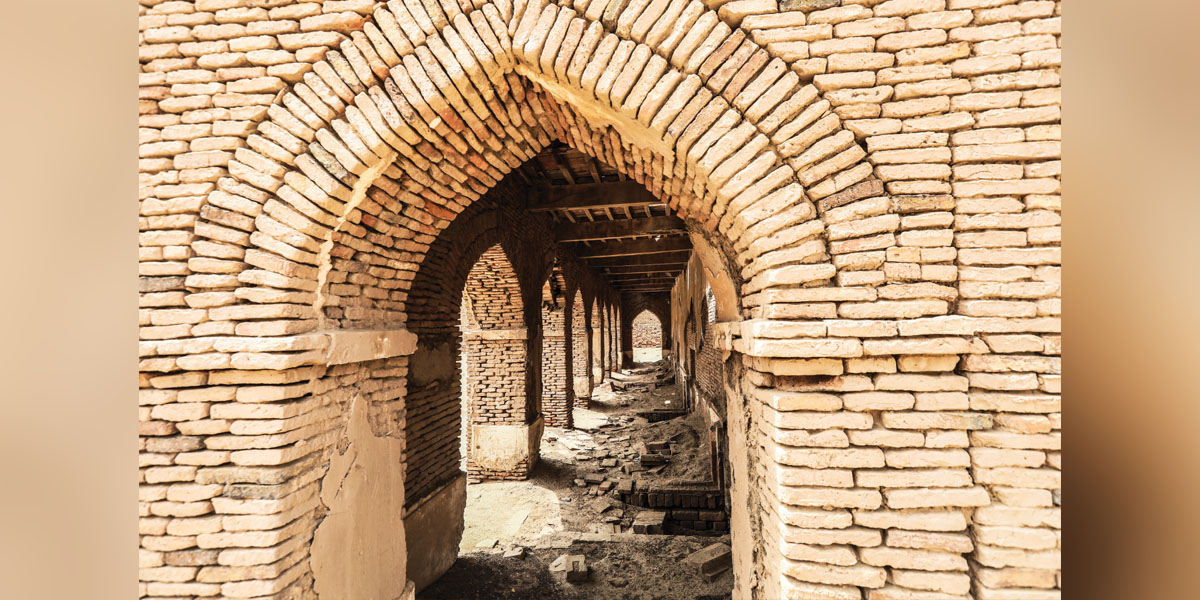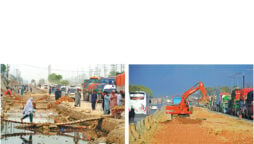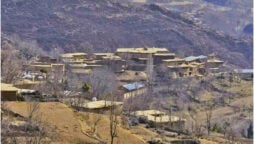Synopsis
The mighty fort stands as a jewel in the Cholistan Desert

The Qila Derawar is a large square fortress located at the heart of Cholistan Desert some 130km south of Bahawalpur city. It was originally founded as the Bhati Fort in the ninth century and it was rebuilt by Nawab Sadeq Mohammad Khan in 1732. At first Instance the fort was known as Dera Rawal and later it was referred to as Dera Rawar. With time, it came to be pronounced by its current time, Derawar.
Derawar is one of many forts found in the Cholistan Desert. The forts were built to serve the purposes of defence against the attackers over the centuries.
Over the centuries, the Qila Derawar has witnessed many military expeditions. In the 18th century the fort was taken over by the Muslim Nawabs of the Abbasi Dynasty from the Shahotra tribe and was rebuilt in its current semblance by the prominent Abbasi ruler at that time Nawab Sadiq Mohammad. But in 1747 the Nawabs lost the possession of the fort. Later, Nawab Mubarak Khan took it back in 1804.
This is one of the key historic structures found in Pakistan. Thousand-year-old catapult shells were found in detritus near mouldering wall in the fortress. The fort was one of the favourite places which the nawabs loved to visit frequently.
Nawab Sadeq Mohammad Khan Abbasi V, the twelfth and final ruler of Bahawalpur State, was born in Qila Derawar in 1904. Mausoleum of the Amirs of the Bahawalpur State is also found in the fortress graced with appealing blue varnished tiles. Cannons which were used by the Bahawalpur army at their time are also kept in the fortress. The Abbasi Jamia Masjid is also present besides the Qila Derawar. This is a very unique and beautiful mosque.
Maqsood Ahmad, Deputy Director Archaeology, while talking to Bol News has shared interesting facts, figures and useful information regarding the historical site. He said Cholistan is an abode of one of the oldest civilizations in this region. From the defence point of view, a series of forts and citadels were constructed over the centuries. The most important among them is the Derawar Fort located in Ahmadpur East, a tehsil of Bahawalpur.
The Qila Derawar covers an area of 448 kanals. The huge walls of the fortress were built with burnt bricks. The walls are 1,500 metres in length and 30 metres high. The walls are intact with the help of 39 bastions built after calculated intervals. These bastions are 30 metres high and they were used to fire canons by the army.
The main buildings of the fort consist of civil building, offices, Baradari, Haram and barracks. The nawabs used to visit and stay in the fort with their families Beautiful and well-decorated lavish rooms for the wives of nawabs remain a mentionable part of the structure’s history. The roofs of the rooms were built very high without any column support. The architecture portrays the advanced construction of that time. The fortification walls of the Derawar Fort are in good condition, but its internal structures have deteriorated considerably.
A magnificent entrance gateway is provided on a relatively high point. The Nawab Palace was built on the right side of the entrance gateway, on top of the bastion that must have been an elegant building at the time of its construction. There was a network of underground chambers and tunnels in the fort, but most of them have collapsed. Some of the canons that were used at that time by the army of Bahawalpur are also on display at the fort.
The Derawar Fort is protected under the Antiquities Act 1975 and is also placed on the tentative World Heritage List of UNESCO. The fort remained in the possession of the Abbasi family till the merger of Bahawalpur State with Pakistan in 1955. The Ministry of States and Frontier Regions (SAFRON) is the custodian of the Bahawalpur state’s properties under the Presidential order No. 12 of 1961.
After the death of Nawab Sadeq Khan Abbasi in 1966 a dispute regarding the distribution of asset arose within the family and the fort suffered from negligence and decay. In 2011 the government of Punjab took over administrative control of Qila Derawar. The provincial government took major steps for the restoration of the fort and for this purpose government of Punjab set in motion a master plan with the allocated budget of Rs115.742 million. Under this restoration plan the maintenance work will be carried out on the following parts of the fort: entrance doors placed in the walls of the fort, Baradari, buildings related to entrance door and the old mosque present in front of the fort. The restoration work will be concluded by the next fiscal year and the insecure parts of the fort will be protected.
The Qila Derawar is the starting point of a very famous desert jeep rally of international significance which is held in February every year. This jeep rally enjoys international fame and significance, as people from all over the world come to experience and participate in the event. More than 100 racers from all over Pakistan participate in it and challenge the sand dunes of the Cholistan Desert in different categories.
The rally was started in 2005 and it is broadcast by various local channels in Pakistan and is also covered by the international media to some extent. People from all over Pakistan and the world come to take part in the annual venture and enjoy the local food, cultural diversity, folk music and visitors also camp near the fort during the jeep rally.
Catch all the Breaking News Event and Latest News Updates on The BOL News
Download The BOL News App to get the Daily News Update & Live News.












 Read the complete story text.
Read the complete story text. Listen to audio of the story.
Listen to audio of the story.